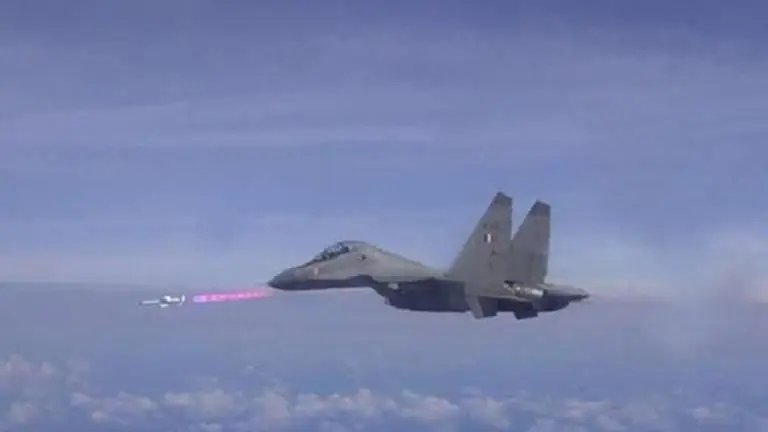Updated 9 October 2020 at 17:04 IST
DRDO successfully flight tests anti-radiation missile RUDRAM to eliminate enemy radars
Defence Research and Development Organisation (DRDO) added another feather on its cap Friday after successful flight test of an advanced anti-radiation missile
- India News
- 3 min read

The Defence Research and Development Organisation (DRDO) added another feather on its cap Friday after successful flight test of an advanced anti-radiation missile. The indigenously developed New generation Anti Radiation Missile or RUDRAM was launched from a SU-30 Mk1 fighter aircraft onto a radiation target located on Wheeler Island off the coast of Odisha.
A first of its kind missile developed domestically, RUDRAM is integrated on SU-30 Mk1 fighter aircraft as the launch platform, having the capability of varying ranges based on launch conditions. The tactical, air-to-surface missile is a force multiplier for the Indian Air Force and has INS-GPS navigation with Passive Homing Head for the final attack. The RUDRAM hit the radiation target with pin-point accuracy, the government said.
The Passive Homing Head can detect, classify, and engage target radars over a wide band of frequencies as programmed. The missile is a potent weapon for IAF for suppression of enemy air defence effectively from large stand-off ranges. This will help Indian fighter jets penetrate deep into enemy territory and take down targets in regions like Tibet of Xinjiang.
As per reports, RUDRAM has a launch speecd of up to 2 Mach, twice the speed of sound, and can be launched from a height ranging from 500 metres to 15 km and can hit radiation-emitting targets within a range of 250 km.
Advertisement
With this, the country has established indigenous capability to develop long-range air-launched anti-radiation missiles for neutralising enemy radars, communication sites, and other RF emitting targets, the Defence Ministry said in statement.
Defence Minister Rajnath Singh took to Twitter to congratulate the DRDO team for this "remarkable achievement".
The New Generation Anti-Radiation Missile (Rudram-1) which is India’s first indigenous anti-radiation missile developed by @DRDO_India for Indian Air Force was tested successfully today at ITR,Balasore. Congratulations to DRDO & other stakeholders for this remarkable achievement.
— Rajnath Singh (@rajnathsingh) October 9, 2020
Advertisement
Other high-tech missile tests
Meanwhile, India successfully conducted its second test-fire of the extended range BrahMos supersonic cruise missile last week. The test-fire of the missile, which can hit targets at more than 400-km range, was carried out under the PJ-10 project of the DRDO. The missile's airframe and booster have been developed indigenously.
Last month, India successfully flight-tested the indigenously-developed hypersonic technology demonstrator vehicle (HSTDV) that is expected to power futuristic long-range missile systems and aerial platforms. The HSTDV, based on hypersonic propulsion technologies and developed by the DRDO, is an unmanned scramjet demonstration aircraft for hypersonic speed flight, which can fly at a speed of Mach 6 and move up to an altitude of 32.5 km in 20 seconds. Besides its utility for long-range air missiles, the technology will have multiple civilian applications too. As per the government, it can also be used for launching satellites at low cost.
(Photo for representation) (Source: DRDO)
Published By : Shubhayan Bhattacharya
Published On: 9 October 2020 at 17:04 IST
